Industry Knowledge
Empowering Computer Vision: A Guide to Image Labeling Services
Why image labeling services are paramount in traversing today’s digital world.
- What are image labeling services?
- Why is image labeling for machine learning important?
- Common types of image labeling services
- Factors that affect the cost of image labeling services
- The benefits of outsourcing image labeling services
- Image Labeling for Machine Learning: Best Practices
- Outsourcing Image Labeling Services
- Picking an image labeling partner
- Image labeling outsourcing at TaskUs
Machine eyes can’t distinguish objects as well as humans do. To make computer applications "see" better, image labeling for machine learning remains the best solution.
Image labeling is key to developing functional computer vision applications. Experienced image labeling service providers allow machine learning teams to scale their training data programs easily; their services have garnered great importance and prominence across nearly all global industries.
In 2021, the global data collection and labeling industry ramped up to USD 1.67 billion in value, with the image and video labeling services taking up the majority of revenue share at 35%. This can be attributed to the rise of image labeling services in different industries like automotive, healthcare, media, entertainment, and eCommerce.
Let’s take a deeper look at what image labeling for machine learning is and dive in on its importance and best practices.
What are image labeling services?
Image labeling is the process of annotating images with descriptive tags or labels to help computers understand and interpret the content of an image. This process enables machine applications to identify objects in real-life situations and provides additional context and information about the scene (e.g., what actions, qualities, or behaviors are the objects showing?).
Tech-enabled companies offer image labeling services to their clients in order to best quantify, organize, and label their images to be used in artificial intelligence (AI) and machine learning development. It’s increasingly becoming a lucrative service, all thanks to the rapid tech advancement of machine learning.2
Why is image labeling for machine learning important?
Image labeling is a critical component of developing computer vision systems in various applications and industries. For example, image labeling services can be used to:
- Train algorithms to identify and categorize products in online retail stores
- Assist with medical diagnoses and treatment planning
- Navigate self-driving cars
- Identify and track individuals and objects in security and surveillance systems
Without accurate and reliable image labels to guide computer vision systems, applications would not be able to function as needed.
Thus, the increase in demand for image labeling services is due to these key reasons:
- Enables computers to understand and interpret images:
- Image labeling not only helps identify the objects, people, and actions depicted in an image; it also provides additional context and information about the scene. This information helps computer vision systems understand an image’s meaning and significance better.
- Helps to train algorithms:
- Image labeling is used to train algorithms to recognize and classify objects, people, and actions in both images and videos. By providing accurate and reliable labels for numerous images, computer vision systems can learn to recognize and classify similar objects and actions in real-life situations.
- Improves the accuracy and effectiveness of computer vision systems:
- Accurate and reliable image labels are essential for deploying computer vision systems in real-world applications. Without them, the systems may be unable to accurately recognize and classify objects and actions, potentially leading to dangerous errors.
A machine learning algorithm aims to achieve automatic labeling but needs a large set of pre-labeled images to train a model. The more machine learning models are trained on more (and high-quality) labeled images, the more they become proficient at correctly recognizing objects.
Common types of image labeling services
Image labeling allows you to organize your images into groups of similar content. Data annotators categorize types of image labeling to assist clients in choosing the service that they need. Here are a few examples of common image labeling services:
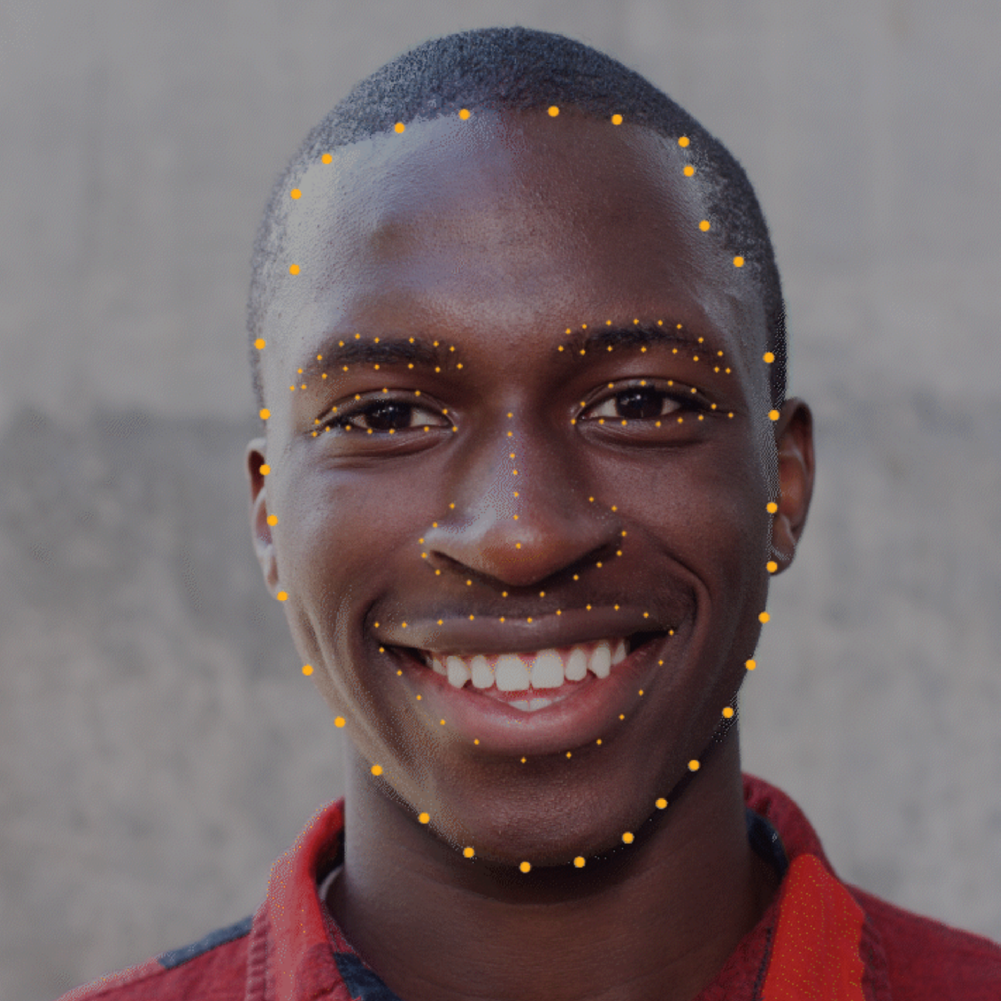
Key Point Annotation. Also known as pose and landmark recognition, this image labeling type lets models capture the finest details in small objects and shapes. Data annotation experts use key points to connect the object and track its movement. This image labeling service is commonly used in AI facial recognition, posture recognition for alternative (AR) and virtual reality (VR) applications, sign language transcription, and even robotic-assisted surgery.
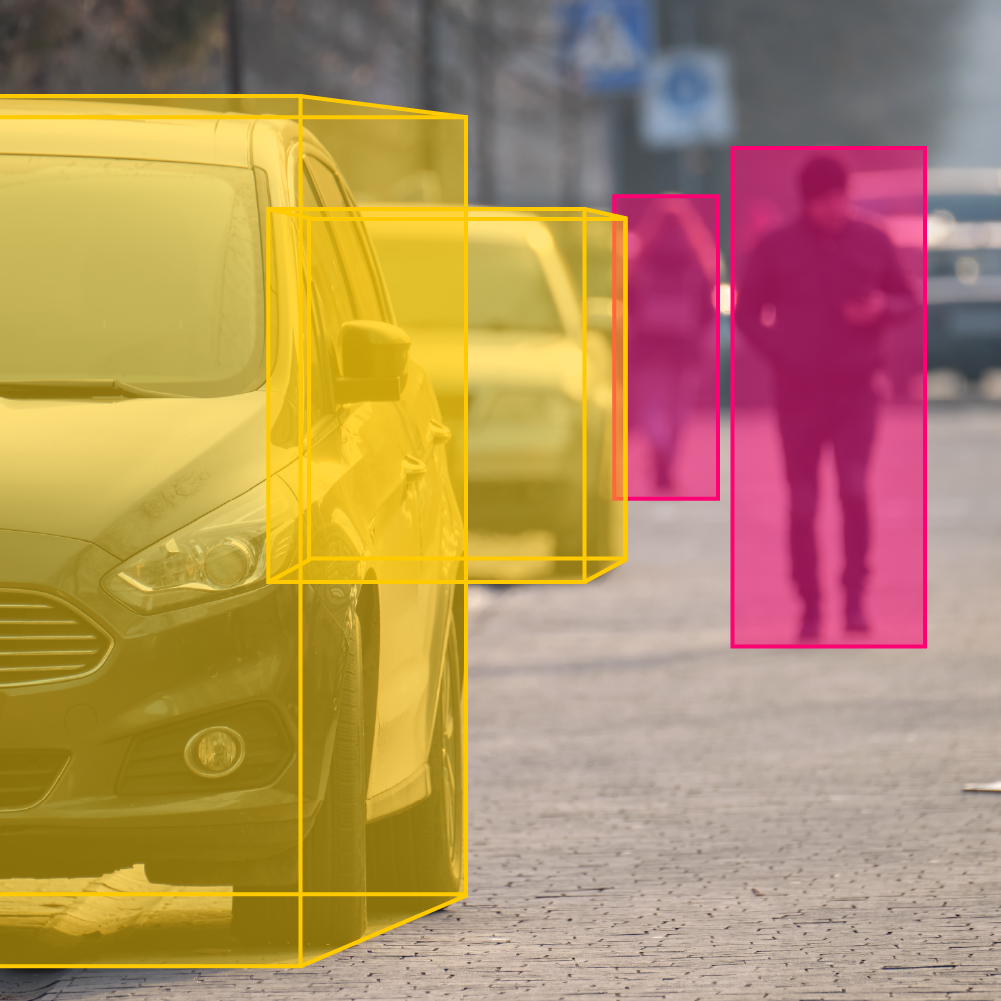
Bounding Boxes. This type of image labeling uses digital rectangles to determine object position with x and y coordinates. Bounding boxes are commonly used in object determination for self-driving cars, auto-tagging products for optimizing eCommerce search experience, image detection for drone imagery, and even monitoring plant growth in agricultural farms.

Polygon Annotation. Modern image labeling services handle irregularly formed images and objects with highly-flexible polygons for a more accurate depiction. It's commonly used for aerial mapping views of natural and artificial bodies of water, sidewalks, road edges, and more. In medical technology, polygon annotation is used to outline internal organs in CT scans.
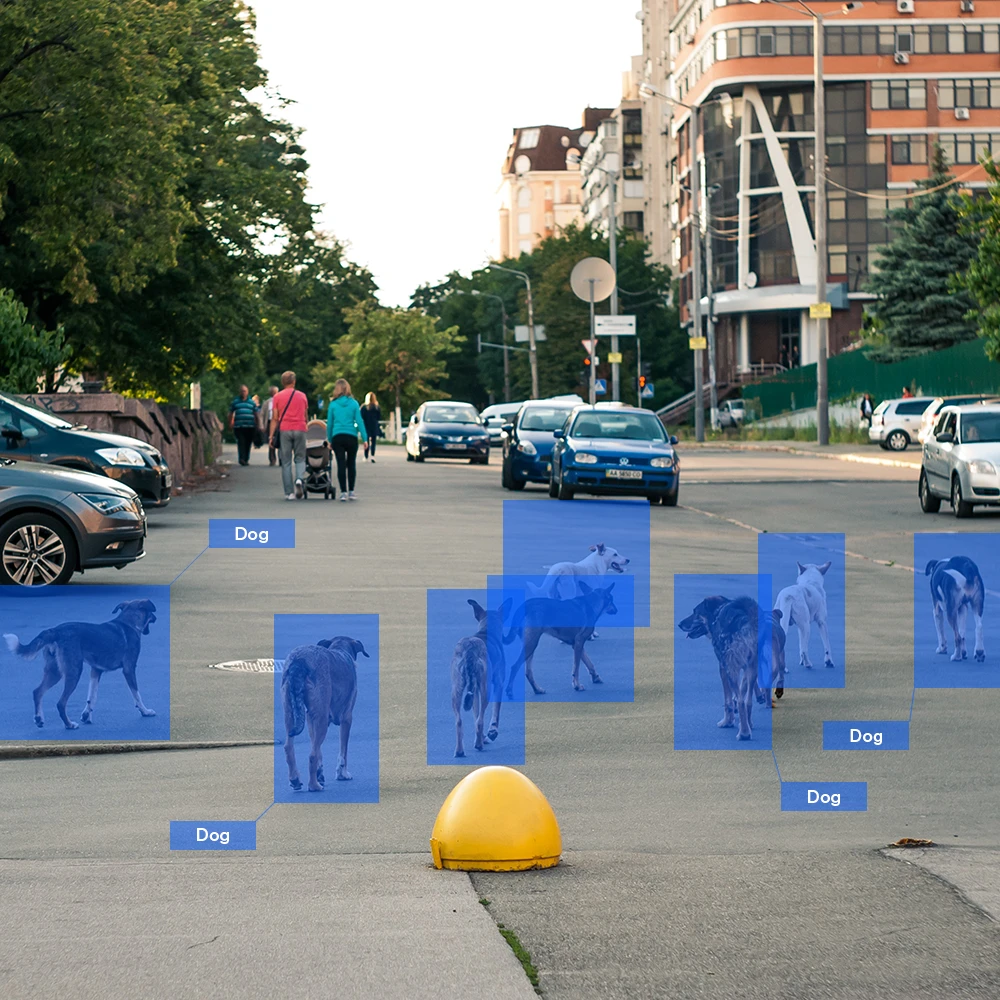
Image Classification. Image classification involves assigning an image to one or more predefined categories or classes. For example, a model might be trained to recognize and classify different types of animals, such as dogs, cats, or birds. With image classification, the model will have to be trained based on a large dataset of labeled images of animals (e.g., “dog,” “cat,” “bird”). The algorithm would then learn to recognize the features and patterns of each labeled class (in this case, animal), such as its body shape, face, and more.
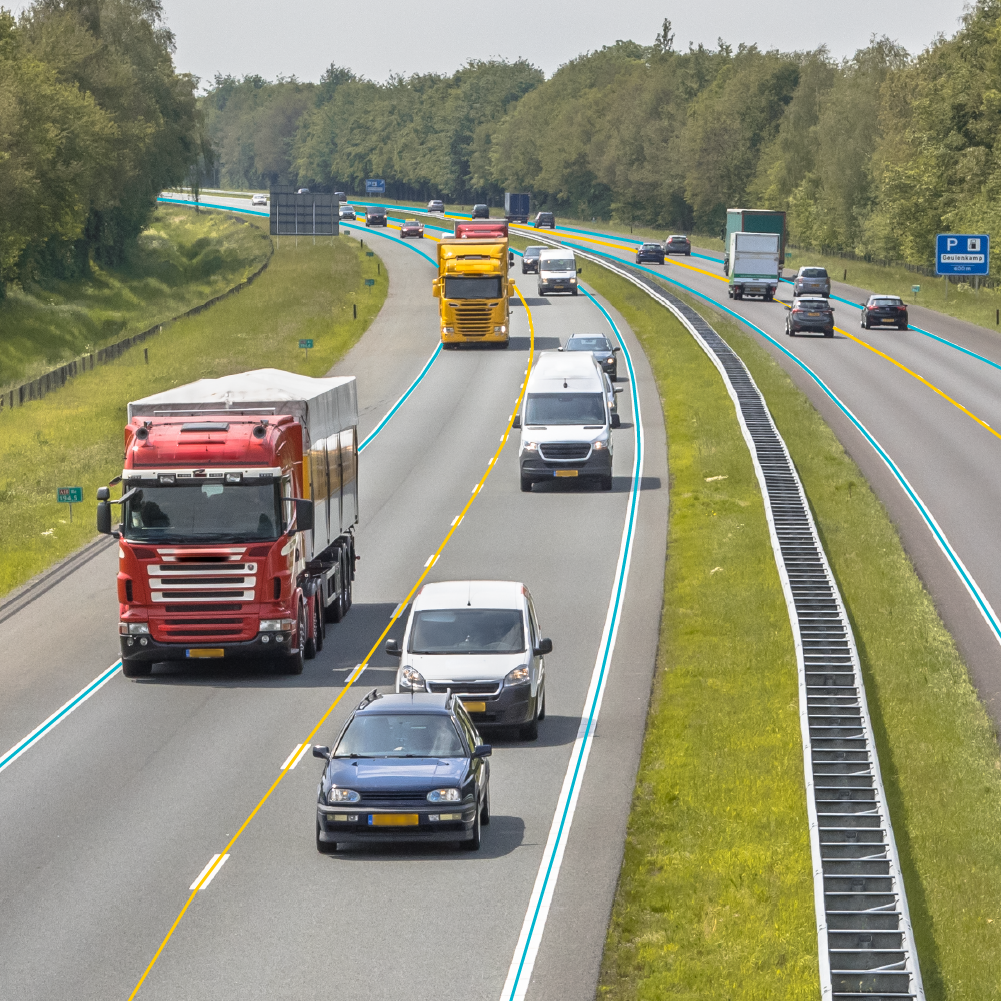
Image Segmentation. An image is usually divided into multiple segments or regions—background and object, for example. Dividing an image requires the algorithm to analyze it and identify the boundaries and edges of the different objects pixel by pixel. It would then assign each pixel in the image to a specific object or background class, creating a map or mask showing the different objects and their relationships.
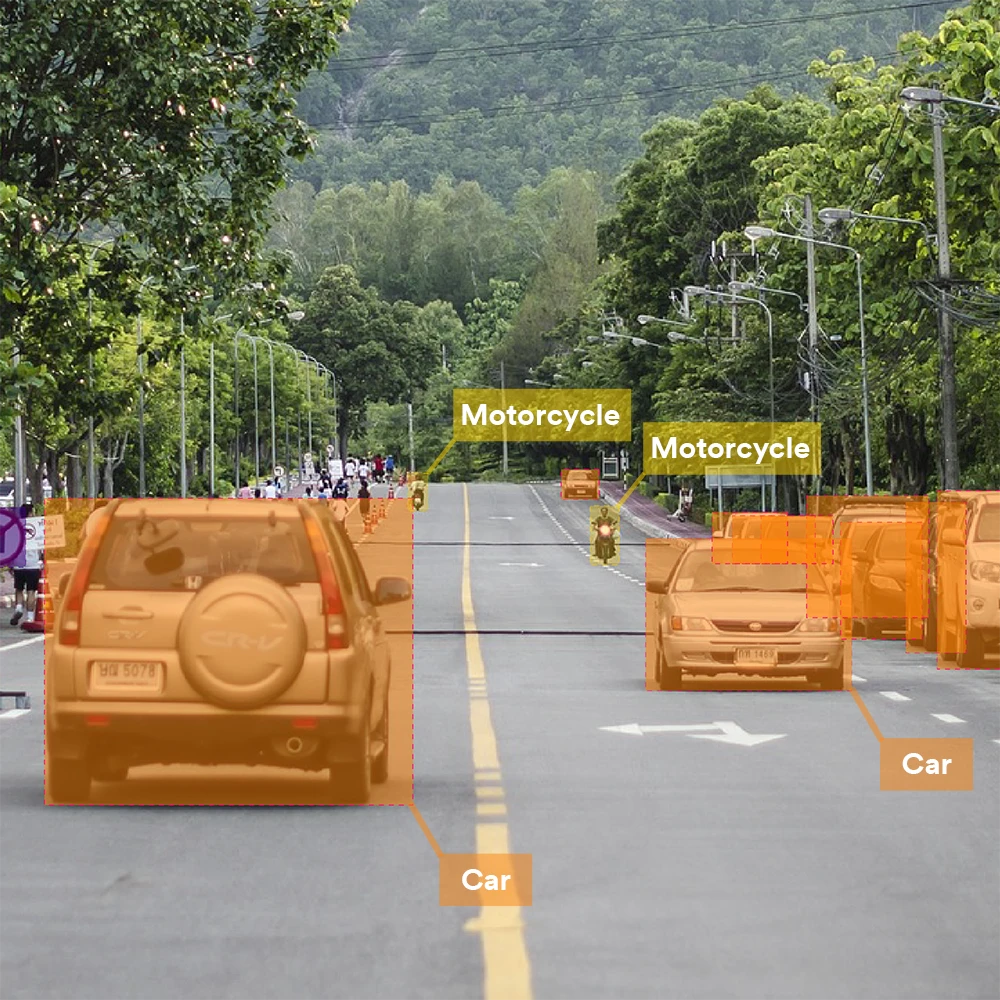
Object Detection. This is a form of image labeling used to identify, locate, and count the number of objects in an image and then label each one correctly. Object detection is typically done by providing the model with a large dataset of labeled images, where each image includes the bounding boxes or regions that enclose the objects of interest.

Pose Estimation. This type of image labeling involves estimating the position and orientation of an object or person within an image. Pose estimation is used in various applications, such as augmented reality, robotics, and sports analysis. It allows computers to understand the spatial relationships between objects and the environment and can be used to track the movement and behavior of objects over time.
Related article: Types of Image Annotation Services and How to Use Them to Train Computer Vision Models
Factors that affect the cost of image labeling services
Two main factors affect the cost of image labeling services that you’re looking for:
- Complexity. The amount of data required for a process can make it harder or easier to complete. For instance, a simple image labeling project won't take much time, but projects that include machine learning on top of data labeling may require much more labor and require higher-level analysis.
- Volume. The other factor that affects the cost of image labeling services is the quantity. If there are a lot of images and data to be labeled, the amount of time required to complete increases as more high-quality data gets added.
The benefits of outsourcing image labeling services
Image labeling is a process that can be tedious and time-consuming. Instead, most companies can opt to have the service outsourced, making it an excellent opportunity for companies to cut costs, time, and errors concerning their image labeling needs.
- Around-the-clock operations. Aside from the massive amount of images that must be labeled and supervised, there must be continuous training to stay relevant and up-to-date with global changes. Outsourcing image labeling can keep your tech projects working around the clock while you spend more time on other core operations.
- Reduce overall costs. If you're looking for ways to save on costs without sacrificing quality or service, look no further than outsourcing your image labeling services. Your outsourcing partner will be responsible for providing you with all relevant and field-proven staff, tools, and space, minimizing your overall expenses.
- Work with seasoned professionals. When you outsource image labeling, you work with experienced data labeling professionals who are equipped with cutting-edge tech and an updated knowledge base in the tech-development space. You can rely on them to deliver quality results within your timeline.
Whether you are looking for cost-effective and innovative solutions to your image-labeling projects, outsourcing partners can provide you with options best fit your budget and requirements.
Image Labeling for Machine Learning: Best Practices
To make the most out of the process, here are some best practices to look out for with your team of engineers:
- Start small. Begin with a small number of images. Doing this can make it easier for the team to establish clear guidelines and standards for labeling. It will also provide the opportunity to establish any feedback or adjustments before proceeding with the full dataset.
- Remember: Quantity, quality, diversity. Ensure that your team has access to a sufficient and diverse number of images for the model to recognize a wide range of objects, poses, and conditions. For example, if your target is to label images of cars, it would be good to include images of vehicles from different manufacturers in different colors, as well as various lighting conditions, image resolutions, etc.
- Conduct thorough quality checks. This ensures that the labeled dataset is accurate and reliable. This process may involve manually reviewing the labels to check for errors or inconsistencies and testing the model on a small subset of the dataset to ensure that it is performing well.
- Quality still wins over quantity. Remember to exclude images that are blurry or lack appropriate visual information, as it will hurt the model's performance. Some images may contain misleading or confusing features that could interfere with the training process quality, leading to incorrect or inconsistent results.
While image labeling services have proven to be really beneficial in machine learning, they also have their own set of challenges that need to be addressed to ensure the success of any AI model. Some of these challenges are faced while handling images with occlusions or ambiguous features that need to be annotated carefully to maintain data integrity. Labeling images with complex objects or ambiguous features, scaling up annotation processes, and handling sensitive data are also some of the other key concerns that need to be addressed to facilitate the development of robust and accurate AI models for computer vision.
Outsourcing Image Labeling Services
Outsourcing image labeling services is an excellent way for companies to cut costs, time, and errors concerning their image labeling needs. Some key benefits of partnering with an image labeling company include the following:
- Around-the-clock operations. Aside from the massive amount of images that must be labeled and supervised, there must be continuous training to stay relevant and up-to-date with global changes. Outsourcing image labeling can keep your tech projects working around the clock while you spend more time on other core operations.
- Reduce overall costs. If you’re looking for ways to save on costs without sacrificing quality or service, outsource your image labeling services. Your outsourcing partner will be responsible for providing you with all relevant and field-proven staff, tools, and space, minimizing your overall expenses.
- Work with seasoned professionals. When you outsource image labeling, you work with experienced data labeling professionals equipped with cutting-edge tech and an updated knowledge base in the tech-development space. You can rely on them to deliver quality results within your timeline.
Whether you are looking for cost-effective and innovative solutions to your image-labeling projects, outsourcing partners can provide you with options best fit your budget and requirements.
Picking an image labeling partner
The right image labeling partner for your business understands what you need. Whether you're looking to use the service as a one-off or as a long-term solution, it's important to know what you're looking for:
Unmatchable experience. Data and image labeling projects are sensitive enough to warrant a partner company with a proven track record. Projects like these need to be handled by people with vast experience and expertise in image handling, tagging, and annotation. After all, only a human can effectively and accurately train a machine.
Image labeling services require specific skillsets, deadset accuracy, and attention to detail to guarantee human error-free outputs. Experienced service providers will have failsafe procedures in place should the labeling system detect human error. Minor mishaps in projects may cause severe implications for the project in the long run.
Constantly delivers high-quality work. There are plenty of companies out there ready to help you label images and data but only so many can offer quality services at reasonable prices while still meeting their customers' needs. High-quality work also comes with an open communication channel should problems arise or they have insights on making the process more efficient and productive.
Cutting-edge data security systems. With cyberattacks and security breaches happening every day, your company must invest and partner with a service provider that ensures the security of the information they handle. Place regulations and compliance systems to guarantee data integrity throughout both organizations.
Values diversity and inclusion. It’s crucial to partner with a service provider that promotes diversity and inclusion within their organization and the services they provide. It’s essential to process data—images, videos, audios—without any biases that may interfere with the labeling process.
Discrimination can be avoided by having a diverse workplace team supervising the image labeling process.
Evaluating service providers is crucial since your chosen organization will handle your image labeling projects from start to finish. Selecting a partner who shares your company's values and can help you achieve your objectives is critical.
Image labeling outsourcing at TaskUs
By utilizing our decades’ worth of knowledge, expertise, and cutting-edge technology, TaskUs is able to support image labeling for the most prominent names across different industries. We’ve even paved the way for the world’s safest driverless car by utilizing the synergy between AI services and the human touch.
At TaskUs, we firmly believe in reaching the full potential of technology with the help of humans. That’s why we invest in our people-first culture, allowing Us to expand to over 14 countries with 48,700+ full-time teammates and over 70,000 Taskers via our freelancer platform, TaskVerse.
Choose a proven partner for your Image Labeling. Choose Us.
References

We exist to empower people to deliver Ridiculously Good innovation to the world’s best companies.
Useful Links








